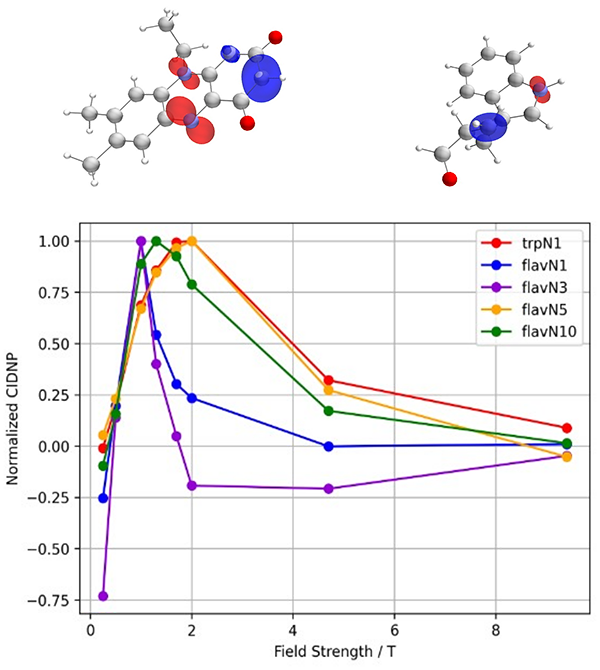
Are you familiar with Chemically Induced Dynamic Nuclear Polarization (CIDNP)? It denotes a remarkable phenomenon in which the nuclear spins of atomic nuclei undergo specific orientation changes during chemical reactions. Analogous to partners unexpectedly aligning on a dance floor due to their chemistry, CIDNP manifests in magnetic resonance experiments. It provides a distinctive perspective on radical pairs—those special duos formed during chemical reactions.
Now, let's introduce photo-CIDNP into the equation. This occurs when light illuminates a system, leading to the generation of radical pairs through electronic excitation. Picture it as if we're shining a spotlight on a stage; suddenly, the chemistry between certain partners becomes even more intriguing. This effect is particularly discernible in crucial biological systems, such as the Light-Oxygen-Voltage (LOV) domains in phototropins, integral to organisms' responses to light.
Venturing into the theoretical realm, we dedicate ourselves to developing methods that unravel the intricacies of CIDNP. It's akin to donning detective hats and applying the Liouville-Von Neumann equation to understand how the nuclear spins in a radical pair evolve. This scientific exploration allows us to decipher the nuanced interplay between chemical reactions and nuclear spins.
